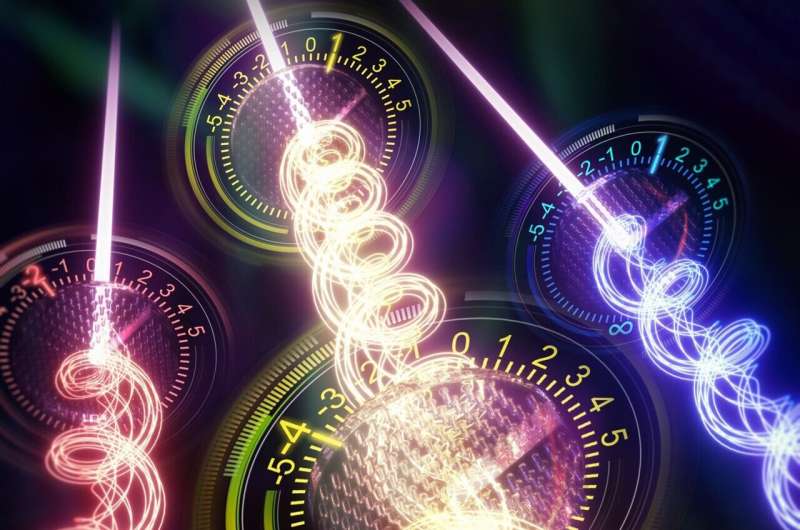This article has been reviewed according to Science X's editorial process and policies. Editors have highlighted the following attributes while ensuring the content's credibility:
fact-checked
peer-reviewed publication
trusted source
proofread
Casting light on counterfeit products through nano-optical technology

Each year, an estimated two trillion dollars is lost globally due to counterfeit products ranging from jewelry to medicine. As current security labels and product authentication methods are rapidly becoming obsolete or easy to hack, there is a rising urgency for more secure anti-counterfeiting labels.
A research team fabricated a 3D printed nano optical security label that provides 33100 possible combinations for heightened security in optical anti-counterfeiting. Associate Professor Joel Yang and team from the Singapore University of Technology and Design (SUTD) collaborated with Professor Min Gu from University of Shanghai for Science and Technology (USST) and Associate Professor Cheng-Wei Qiu from National University of Singapore (NUS), along with their respective teams and published their research paper in Nature Nanotechnology.
The research team achieved such a feat by exploiting higher dimensional structured light, i.e., colored Orbital Angular Momentum (OAM) beams, through the fabrication of 3D printed spiral phase plates. Importantly, these plates were miniaturized down to a diameter smaller than that of a strand of human hair and further integrated with structural color filters—spiky looking structures that allow specific colors of light through (refer to image).
"Orbital Angular Momentum or OAM light beam is increasingly being used in exciting research spaces such as optical communications, super-resolution imaging and quantum computing and we wanted to explore its capabilities in the anti-counterfeiting field as well. But OAM requires coherent light sources like lasers. We wanted to see if we could use incoherent light from the sun or a light bulb to generate OAM beams instead," explained Hongtao Wang, first author of the paper and SUTD-NUS joint Ph.D. student.
In their study, they included color, spatial position, and OAM of light (one degree of freedom of light) onto a small colored vortex beam (CVB) generator (25 μm). With only 10-by-10 CVB unit array to demonstrate, the optical security label they designed could open pathways for the next generation of optical anti-counterfeiting.
"We see things clearly when we hold them up to the light. What our team has done is to learn how to use the natural light that surrounds us and extract tiny beams from it that carry information encoded in not just color, but also by how much we 'twist' its wavefront. This optical version of the combination lock that utilizes high-dimensional structured light provides us with a powerful platform for advanced anti-counterfeiting and information security," explained principal investigator Associate Professor Yang.
More information: Hongtao Wang et al, Coloured vortex beams with incoherent white light illumination, Nature Nanotechnology (2023). DOI: 10.1038/s41565-023-01319-0
Journal information: Nature Nanotechnology
Provided by Singapore University of Technology and Design





















